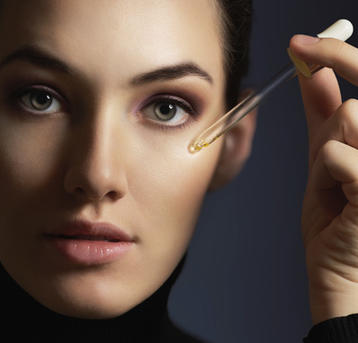Always a bridesmaid never a bride, bodycare is rarely a top priority for consumers when it comes to beauty. But industry experts say there’s a shift on the horizon for the category, which according to Ella Baché’s Hayley Fahd makes up 35.3 per cent of the cosmetic sector. GCI Magazine comments: “While facial care continues to account for the lion’s share of skincare total value sales, bodycare has been going through a transformation period, driven by innovation and further expansion into emerging markets.” But what exactly is next for bodycare? BD explores below.
Targeted complaints
Just as skincare is growing more personalised in product offerings, bodycare is following suit. Products that tackle targeted complaints are now increasing in popularity with beauty offerings designated for neck down. “Skincare brands have also invested in developing more sophisticated and customised bodycare offerings for consumers, similar to those found in facial care,” says GCI Magazine.
A rise in products reducing sun damage on the body have now entered the market. skincare expert Robyn Hutch comments: “There is always going to be trends around products that fight signs of ageing or offer preventative benefits.” It’s a priority for Australian consumers in particular, with Fahd saying: “A current key concern for bodycare, in my opinion, isn’t a product or a treatment or machine, but the sun.” As a result, products containing SPF continue to rise in popularity as they can help reduce sun-induced ageing. Fahd comments: “An absolute must for this season’s innovations is added SPF in hand and body creams, these areas of the skin can often be forgotten and in the Australian climate we need all the protection we can get!” founder Marie Kapetanakis agrees, predicting of the next year: “Expect to see more bodycare launches with added SPF [and] anti-aging claims... as body image becomes increasingly important.”
Oil slick
Hydration continues to be a paramount feature in bodycare formulations, but will be delivered via an increased amount of oils, which are gaining traction among consumers. Euromonitor comments: “Oils are expected to continue to dominate skincare innovation not only as a format or ingredient but also as an extra product to be added to one’s skincare regimen.” Kosmea deliberates that body oils are the next big thing: “Just as in facial skincare, oils and serums are making their way into modern bodycare products and are excellent carriers for active ingredients as well as providing light, long-lasting and non-stick formulations, including dry body oils targeting stretch marks and skin elasticity, and body sculpting serums for use on hips and thighs for smoother and firmer skin.”
Skin firming
An ongoing area of interest for women remains the anti-cellulite arena. Fahd believes cellulite will be an area of increased interest in the next 12 months – a continuation of the 2 per cent growth average the sector experiences year-on-year. Fahd comments: “Treatments are the biggest trend in bodycare at the moment, these treatments such as mesotherapies, Hypoxi treatments and cellulite laser treatments are all targeted at reducing fat build-up that allows the skin to appear smooth and toned.” Kapetanakis agrees: “Firming and toning the skin is of utmost importance… improving skin texture is also a high priority among European consumers.”
Perhaps inspired by the increased interest in anti-cellulite treatments, there’s a slew of new anti-cellulite bodycare products that have hit the market. Clarins has just released the Tonic Body Treatment Oil that aids in eliminating toxins, stimulating skin and firming tissue. head trainer Charlotte Turner explains how the trend is evolving: “Cellulite treatments will continue to be a feature into 2017, with new products to smooth the skin and active ingredients that have an even greater thermogenic effect deep in the skin.” A multitude of other major beauty brands are following a similar intention when it comes to firming, including NIVEA’s Q10 body offerings, which tighten skin thanks to the incorporation of Coenzyme Q10.
Stretch marks will be another area of bodycare focus, says John Manus of scar experts . He believes a key focus will be “preventing and treating stretch marks” which are prevalent in both men and women alike. Manus continues that the year’s coming bodycare releases will treat body complaints such as this, saying there will be “more focus on sculpting the body… there will also be a desire to maximise the outcome which would include minimising any resulting scarring or stretch marks.”
Nature’s own
A penchant for organic and natural where possible continues for bodycare. communications manager Lisa McLean explains: “People are connecting health with beauty. Considering the food you eat, the exercise you do, the time you give yourself to relax and unwind, along with controlling what you put on your body and how toxic the ingredients are is all part of bodycare. More consumers are taking this holistic approach and brands will have to adjust their offerings as the demand grows.”
Certified organic and natural ingredients are now one of the key areas of interest for consumers, leading to a rise in natural-minded beauty brands. The likes of proudly natural and have long been on board, incorporating plant-based ingredients and oils into their growing ranges of bodycare. The popularity of brands such as these looks set to only grow says McLean: “If they can get results from products that contain natural and organic ingredients rather than ones filled with chemicals which are detrimental to health, then more people will take this option. So, innovations we are seeing now and will continue to see is the development of skin[care] products using what nature has to offer in unique combinations developed in labs using the latest science and offering results without the toxins.”




